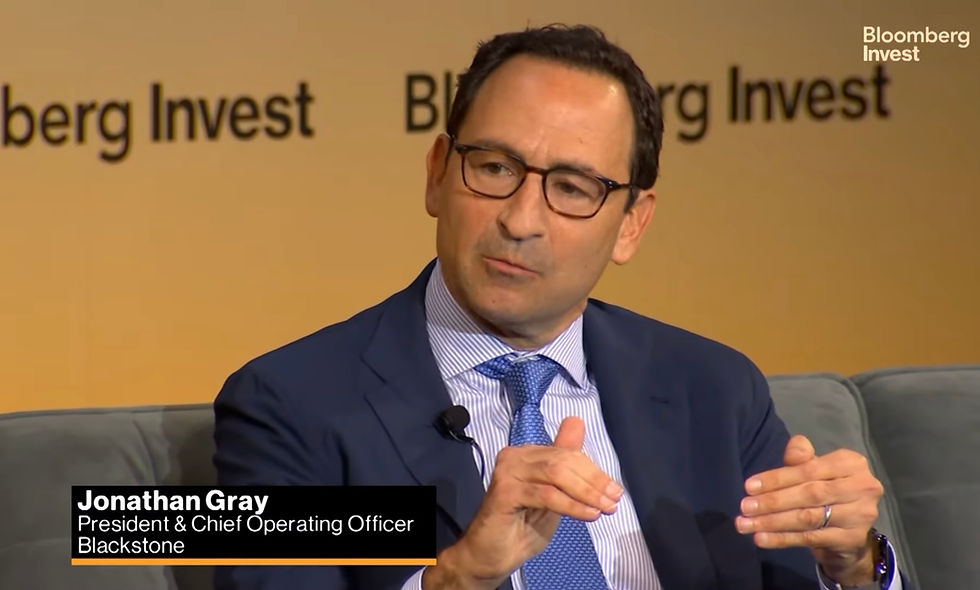Leading Investors Weigh Impact Of Public-Private Credit Convergence
- Editor
- Mar 7, 2025
- 2 min read
In Brief
Bloomberg's Dani Burger hosted a revealing discussion with Katie Koch (TCW Group), Jonathan Lewinsohn (Diameter Capital), and Marc Lipschultz (Blue Owl Capital) examining the growing intersection between public and private credit markets, its implications for investors, and how this evolution might perform during economic volatility.
Big Picture Drivers
Growth trajectory: Private credit has expanded dramatically, but 95% of participants haven't experienced a recession or persistent non-zero interest rates.
Borrower flexibility: Companies can now choose between public and private debt based on their specific needs, with different norms and relationships in each market.
Volatility concerns: Today's market turbulence highlights a key difference - private markets provide steady capital access during volatility while public markets may shut down temporarily.
Key Topics Covered
Convergence definition: Panelists distinguished between healthy cross-pollination of markets versus problematic blending that eliminates their distinct advantages.
Market signals: Public markets provide valuable information for private market participants, allowing them to adjust underwriting and spot industry-specific trends.
Recession preparation: With softening economic data and potential consumer weakness, credit managers are adjusting deployment rates and maintaining strong covenants.
Key Insights
Information asymmetry: Private credit stress won't be immediately visible through traditional default metrics but through amendments, extensions, and covenant changes.
Underwriting differentiation: An economic downturn will reveal quality disparities among private credit managers, particularly those who sacrificed covenants for growth.
Transparency reality: Private credit actually offers significant transparency through BDCs and quarterly reporting, contrary to common perception.
By The Numbers
Consumer power: The top 10% of consumers drive 50% of U.S. consumption, making their spending habits crucial for economic outlook.
Market reduction: Public equity markets have experienced a 50% decrease in listed companies over the past 20 years.
Scale: Blue Owl manages approximately $250 billion focused on private markets, while TCW manages about $200 billion across credit markets.
Memorable Quotes
Business cycle: "We believe in the business cycle. That doesn't sound like a really brave statement, but we haven't had one for 17 years." - Katie Koch
Market distinction: "More people have seen Bigfoot in the last decade and a half than a business cycle, most likely." - Jonathan Lewinsohn
Access advantage: "If you are in the public market, you had no access to incremental capital. If you were in the private market and you still are fundamentally sound business, you had access from us." - Marc Lipschultz
The Wrap
As public and private credit markets increasingly interact while maintaining their distinct advantages, the coming economic cycle will test underwriting standards and reveal whether private credit managers have maintained discipline during the industry's rapid growth. Investors should focus on origination advantages, covenant strength, and industry concentration when evaluating managers.



Comments